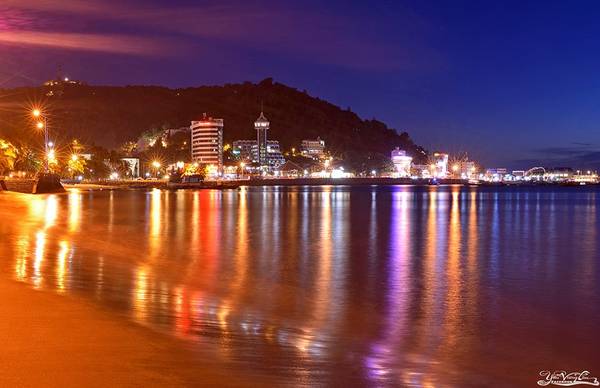Vietnamese Food: Pho (Phở) recipes
Cách nấu phở bò theo miền Nam như thế nào, phở miền Nam khác gì miền Bắc là thắc mắc của rất nhiều bạn. Về căn bản, phở bò miền Nam có thêm giá đỗ, ngò gai, húng quế và tương đen, nước dùng đục hơn chứ không trong như phở Bắc. Sau đây các chuyên gia đầu bếp của vaobepnauan.com sẽ hướng dẫn các bạn cách nấu phở bò miền Nam cực chi tiết với hình ảnh minh họa đầy đủ nhé.
Nguyên liệu nấu phở bò miền Nam:
– 1/2 kg bánh phở (4 người ăn).
– 2 kg xương bò; 1 kg gầu; 10 viên bò viên.
– 200 g thịt bò phi lê.
– 1 củ gừng; 1/2 chén bột nấu phở gồm có các loại: thảo quả, quế, hồi… (có thể mua ở Chợ Lớn hoặc các nhà thuốc bắc). Các loại gia vị: đường, hạt nêm, bột ngọt, muối.
– Các loại rau: ngò tây, xà lách, giá, húng quế. Tương ớt, tương đen, hành tây, hành lá. Ớt trái, chanh, tiêu bột.
Cách chế biến:
– Xương ống rửa sạch, rửa lại với rượu trắng, cho vào nồi nước sôi chần sơ. Vớt ra cho vào nồi áp suất, thêm nước rồi đậy nắp ninh trong khoảng 1 tiếng đồng hồ. Tắt bếp, để đến khi nồi báo thì mở nắp, vớt bỏ xương.
– Phần thịt gầu rửa sạch, luộc chín vớt ra cho vào nước đá lạnh. Khi ăn thái thịt gầu, bò viên thành lát vừa ăn.
– Thịt bò phi lê rửa sạch, khi ăn thái lát mỏng.
– Nước ninh xương cho qua một chiếc nồi khác. Cho gói bột nấu phở vào túi vải cột chặt lại thả vào nước dùng. Củ gừng rửa sạch, nướng sơ, đập dập cho vào chung rồi đun sôi.
– Vớt bỏ gói bột nấu phở, nêm lại gia vị vừa ăn rồi cho đầu hành vào.
– Các loại rau sống rửa sạch để ráo nước.
– Chần bánh phở qua nước sôi rồi cho vào bát, cho gầu, bò viên lên bề mặt, thịt bò phi lê, chan ngập nước dùng, thêm ít rau hành thái nhuyễn là hoàn tất.
Cách nấu nước dùng ngon cho món phở bò
Nhờ một chút “bí quyết”, bạn sẽ có chế biến được nước phở ngon, ngọt đậm dà, thơm dịu mùi hồi thảo quả, một chút cay nhè nhẹ của gừng quế.
Nguyên liệu cho 6-7 bát nước phở:
– 1kg xương ống (xương chân bò).
– 30-50gr gừng nướng thơm, cạo cháy, đập dập.
– 1 củ hành tây, nướng thơm, bóc vỏ cháy bên ngoài.
– 1-3 hành củ, nướng thơm, bóc vỏ cháy (tuỳ thích).
– 1 hoa hồi, nướng thơm hoặc rang qua.
– 1-2 thảo quả, nướng thơm hoặc rang qua, có thể ép dập.
– 1 sá sùng.
– 1 thanh quế dài tầm 10-15 cm.
– Nước mắm, muối, đường phèn, bột nêm.
Làm sạch xương: Xuơng ống đập dập hoặc cưa/chặt thành khúc, bỏ tuỷ và ngâm vào nước muối dấm ít nhất 1-2 tiếng. Cho vào xoong ngập nước, cho thêm 1 thìa muối (15gr), đun sôi sục trong 3 phút, rồi rửa sạch.
Nên bỏ tuỷ xương vì nước dùng có thể bị lợ lợ ngây ngấy chứ không ngọt thanh.
Đun lần 1: Cho 3l nước vào nồi, đun sôi, nêm thêm 1 thìa muối, vặn nhỏ lửa rồi cho xương đã làm sạch vào.
Đun liu riu, thi thoảng hớt bọt nổi lên và tiếp thêm nước sôi. Sau 5-6 tiếng, tắt bếp, dùng rổ hoặc rá thoáng đậy lại, để nguội.
Dùng nồi cao thì nước phở trong và ngon hơn, cũng ít phải tiếp nước hơn.
Đun lần 2: Cho hai thìa nước mắm vào nồi nước xương, đun dưới lửa vừa phải đến khi sôi thì giảm nhiệt, đun liu diu, 80-90 độ.
Bạn nhớ để ý lửa vì lửa to và sôi sùng sục làm nước phở bị đục.
Trong thời gian đấy, bạn chuẩn bị các loại nguyên liệu: gừng, hành, quế, hồi, thảo quả, cho vào đun cùng. Sau hai tiếng thì cho gia vị, đường, muối vào nêm cho vừa, đun thêm 15-30 phút nữa, hớt bọt nổi lên vì trong gia vị cũng có tạp chất.
Mùa đông, bạn có thể cho nhiều quế, hồi và gừng hơn để tạo cảm giác ấm cho món phở, tuy nhiên nếu cho nhiều hoa hồi quá sẽ dễ bị hắc.
Vớt gừng ra rồi lọc nước dùng.
Bạn dùng rổ lưới để lọc nước dùng. Làm như vậy, xương sẽ được lọc bỏ hoàn toàn. Bạn có thể lọc lại phần gân bám ở xương để ăn cùng với phở nếu thích.
Đối với nước dùng này, bạn có thể cất thành từng hộp (túi) vào tủ đá để dùng dần. 1kg xương sẽ được 3-3.5l nước phở ngon. Nếu không có sá sùng bạn có thể nướng mực cho vào, sẽ có vị ngọt đậm đà hơn. Dùng bột nêm vừa phải nếu không nước sẽ bị lợ. Bạn nên cho theo công thức 2 phần thìa bột nêm với 1-2 phần muối, cũng phụ thuộc vào bạn dùng đường phèn như thế nào nữa mà điều chỉnh.
Phở là một món ăn rất phổ biến! Để nấu được món phở ngon trước hết nước dùng sao cho thanh ngọt, trong, thơm mùi quế, thảo quả… Tuy không cầu kỳ nhưng bạn cần để ý lửa và ninh trong thời gian lâu một chút.
- See more at: http://vaobepnauan.com/bi-quyet-nau-pho-bo-theo-kieu-mien-nam-ngon-dung-vi/#sthash.WKTgydGH.dpuf
.png)

























